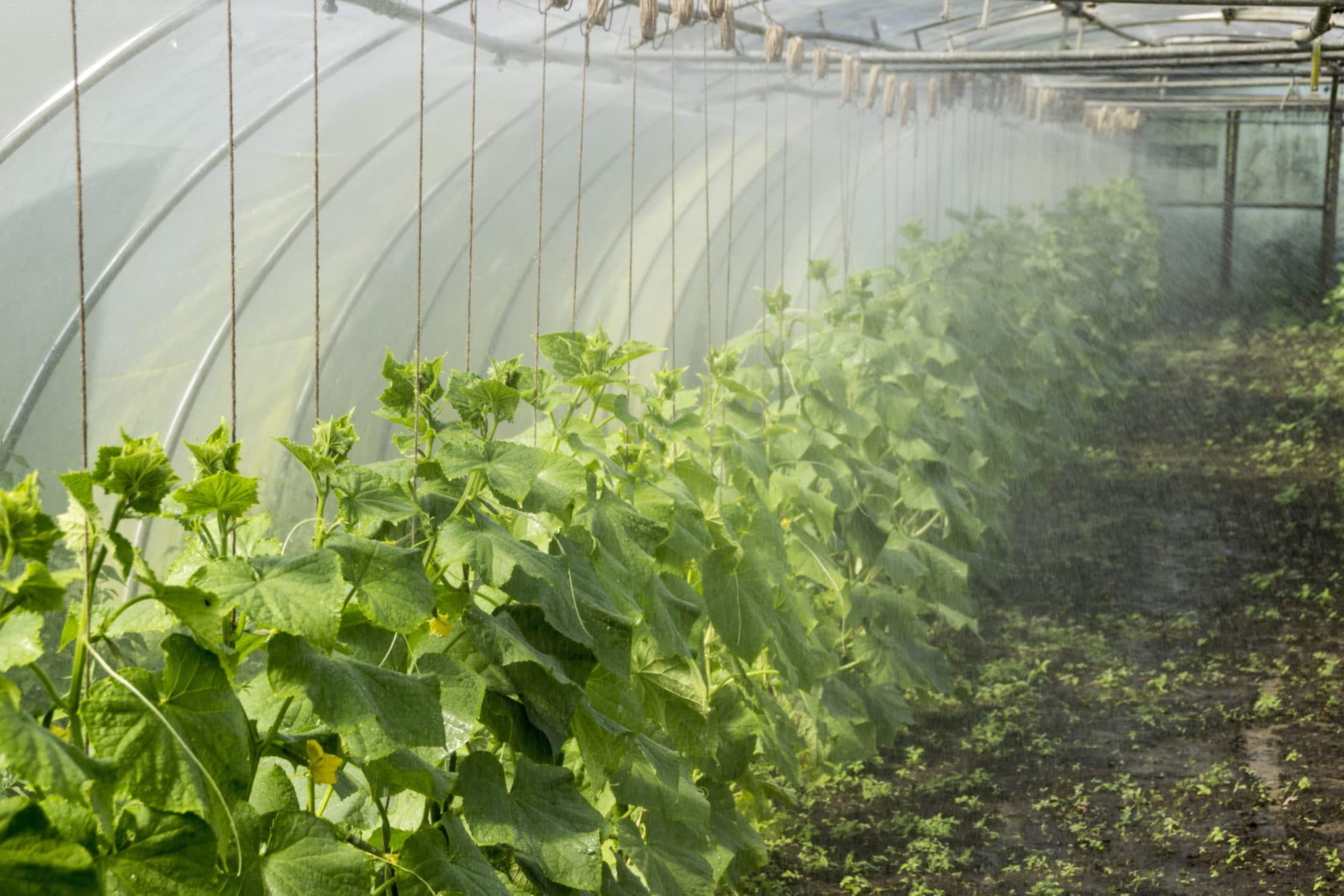Are you curious to know how to grow vegetables in a greenhouse year-round? Greenhouse gardening has loads of benefits to offer including longer growing seasons, opportunities to grow your own food, as well as protection against harsh weather conditions, pests, and vermin. However, the biggest advantage of setting up your own greenhouse is the fact that you can grow your favorite plants all-year-round.
To make this happen, you need to know how to adjust the heating, lighting, amount of water, and humidity levels. It’s important to note that your greenhouse conditions also need to be adjusted depending on your growing zone, the kinds of vegetables you want to grow, and how much sunlight the plants in your greenhouse get.

What are the Easiest Vegetables to Grow in a Greenhouse?
The easiest vegetables to grow in a greenhouse depends on the season. The best vegetables to grow during the winter season include carrots, Brussel sprouts, winter squash, cabbage, and potatoes. On the other hand, the best vegetables to grow during springtime are radishes, spinach, broccoli, and asparagus.
If you want to grow vegetables in the summer choose zucchini, cucumbers, corn, and tomatoes. If you want to grow vegetables in the fall, go for mushrooms, kale, onions, and bell peppers.
How Do You Grow in a Greenhouse?
In order to find success in year-round greenhouse gardening, you need to pick vegetables that thrive under the same conditions, select the right containers and soil, and control the growing environment.
Pick out vegetables that you want to grow each season
Growing plants in a greenhouse generally starts with picking the types of vegetables you intend to grow each season. If you’ve already selected the vegetables that you like, the next step is to group them together based on how these veggies tend to grow best. Make sure that you plant the vegetables that thrive in similar environmental conditions to make it easier for you to control the heating, lighting, amount of watering, as well as the levels of humidity.
Select the right containers and soil
Once you’ve picked out the vegetables you want to grow, you’ll need to choose their appropriate containers and soil. Keep in mind that your containers need to have enough space for your vegetables to grow without obstructions. Make sure that the containers you choose are able to drain excess water as well.
Lastly, the growing container that you intend to choose must depend on the kind of vegetable that you’ve chosen to pick out. Also, you need to consider if this vegetable should be grown in a pot or if you should plant them directly into the ground.
It’s best if you choose a good and fertile soil to plant your vegetables in. Experts recommend soil that’s mixed with compost because aside from adding fertility to the soil, it also offers insulation to your plants during the winter season.
Learn to control and monitor the growing environment
It’s important to adjust your plants’ growing environment according to the seasonal changes in terms of lighting, temperature, humidity, and amount of watering.
Lighting
For instance, you can turn your lighting system off during the summer since you’ll be able to get enough lighting from the sun. However, you need to turn this on in fall and winter if you want your plants to grow their best.
Since the key is to get as much natural light as you can for your plant babies, it’s best to place them in areas where they can enjoy the most sunlight even when the day is a bit cloudy. Should you decide to add extra lights in your greenhouse, choose to install warming lights and LED lights because they provide a high output at a low cost.
Temperature
Make sure that your greenhouse has a thermometer that’s able to record the temperature inside the enclosed space, as well as the temperature outside. Based on the temperature readings, you’ll be able to increase the heat inside your greenhouse or cool it down as needed.
If the temperature is high in the summer, you need to turn on your cooling system or open the vents to circulate air inside the greenhouse. Conversely, if the temperature is low in the winter, you may have to install insulation or use electrical heat.
Humidity
If you live in an area that experiences dry weather most of the time, consider growing plants that thrive in this kind of climate so that you won’t have to provide your vegetables with the amount of humidity they’d need. In case you’re not aware, misting is one of the simplest ways to increase the levels of humidity inside your greenhouse. You can check if your plants need more or less humid air if you feel the moisture on your plants.
Watering
You obviously need to water your vegetables more in the summer than in the winter. It would be easier for you to do this if you decide to install an automatic watering system that you can easily adjust as needed.
However, if you decide to water your plants manually, learn how to check when you need to water them less or more. The best way to do this is to check if the soil is still damp. If bits of soil stick to your finger after you touch it, then you don’t need to water the plant more.
The Conclusion After Knowing How to Grow Vegetables in a Greenhouse Year-Round
Knowing how to grow vegetables in a greenhouse year-round is a must if you intend to maximize the use of your enclosed space. Don’t miss out on the benefits of greenhouse gardening! Learn to make the most out of your botanical oasis!
